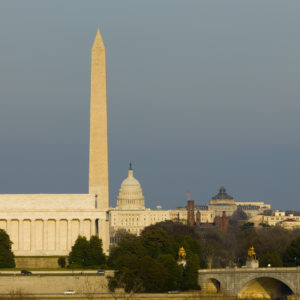District of Columbia Mayor Muriel Bowser wants to increase the city’s height limit, but there’s a better way to improve housing affordability and economic development in the nation’s capital: repeal the outdated rule entirely.
Last month, Bowser released DC’s Comeback Plan, setting forth five years of initiatives to update the city’s economic development strategy. One proposal focused on increasing the city’s building height limits in specific neighborhoods.
Bowser’s proposal is a step in the right direction. It would help the city to grow upward and become more densely populated in the desirable (and expensive) downtown neighborhoods. But Congress could do better by repealing the height restriction for good.
The Height of Buildings Act was enacted by Congress in 1899 in response to the building of the Cairo Hotel, which became the tallest residential building in the city. The hotel’s neighbors claimed that constructing such a tall building would be a fire hazard and diminish their light and air quality. Despite the protests, the Cairo Hotel was built — but the height limit was promptly established. The HBA’s original intent was to stop future developers from creating what the public at the time deemed to be a dangerous eyesore.
The law was enacted by 19th-century NIMBYs.
In its 100-plus-year lifespan, the HBA has been amended several times to provide for exceptions for certain buildings and to increase minimally the height limit, as Bowser’s proposal would do. It’s time our government reconsidered whether the law should even exist anymore.
While the argument that tall buildings are dangerous may have had some standing in 1899, it does not anymore. We have the technology now to know that taller buildings present no extraordinary risk. The only reason the HBA is still in effect today is to dictate the character and aesthetics of Washington.
But those aesthetics are extremely expensive.
The National Low Income Housing Coalition found that 30 percent of D.C.’s renter households were extremely low income in 2020 — nearly 50,000 households, 65 percent of which were spending at least half of their income on rent. But even higher-income households are burdened: More than 25 percent of middle-income renter households were spending at least 30 percent of their income on rent. And this problem goes beyond renters.
From 2017 to 2021, only 41.5 percent of D.C.’s housing units were occupied by the individuals who owned them. This rate slightly increased in nearby Arlington, Va., at 42.3 percent. But farther out from the city center, Bethesda, Md., was remarkably higher, with more than 65 percent. Additionally, most of the city’s workforce comprises commuters who live in the suburbs. The most recent study on the issue found that D.C.’s population increased by 79 percent during the workday due to the influx of commuters. Clearly, high housing costs in D.C. are keeping homeowners and workers out.
The HBA is aesthetic zoning. While some argue that aesthetic zoning has its place in planned communities as it helps to create a cohesive design, it is an impractical burden to place upon an entire city. While Bowser’s proposal to increase the height limit would allow the city to grow upward, the economic effects would be limited as the amendments would only affect certain parts of the city.
Notably, the relaxed height restrictions would only help individuals who can afford to live in the more expensive parts of the city and would do little to help predominantly minority communities like Anacostia or Congress Heights. Repealing the HBA would allow for even greater housing growth throughout all parts of the city and, in turn, lowered housing and rental prices for a greater swath of D.C.’s businesses and citizens.
D.C.’s height restrictions allow for breathtaking views of its monuments and historical landmarks — but are views enough reason to limit the density of a city and, consequently, raise housing prices? What good is a beautiful city if almost no one can afford to live there?


